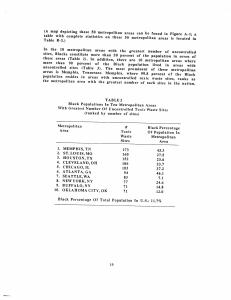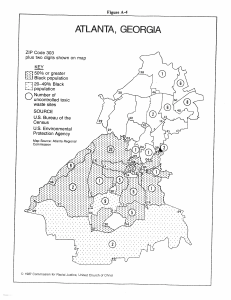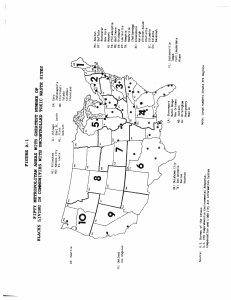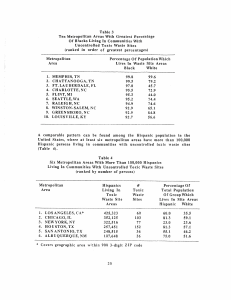This Newsweek article details one of the issues touched on by Rothstein in The Color of the Law— environmental racism. Below I’ve attached tables and maps from Dr. Benjamin F. Chavis Jr. ‘s “Toxic Waste and Race in the United States” , a study that identified the the ways city planners concentrated industrial sites near predominantly black communities. Rothstein discusses the legislature surrounding this issue, but I was interested in how living near toxic industrial facilities impacts marginalized communities. This article discusses the health consequences of living near an industrial plant, including severe asthma that residents are often born with. The epidemic in Detroit, Michigan is so severe that blackmarket inhalers and packs of albuterol sell for $15 to $20 and $10, respectively. Especially heartbreaking to me was the story of 7-year-old Shiloh Otoo, a child with severe asthma. Overexposure to the steroid used to treat his frequent attacks resulted in brittle bone disease, which contributed to his obesity.
The boundaries drawn by district planners have real consequences for specific individuals. Despite the importance of these tables and maps, the communities impacted by them are more than numbers. Real people like Shiloh will suffer the consequences of a city or district planners decisions.
Charts and Maps from Dr. Benjamin F. Chavis Jr. ‘s “Toxic Waste and Race in the United States”





While environmental racism in urbanized settings has wreaked havoc on the populations inhabiting such areas, mainly African Americans, there seems to be little discussion of the same issue affecting Native Americans in this country. Entire nations, like the Navajo nation, have fallen victim to the affects of coal mining.
The Four Corners Coal Mine power plant is the biggest employer on the nation, but has destroyed the health of individuals, lakes, and rivers. The Navajo Nation has recently elected to by the mine due to a lack of employment, but the mining company stipulated that they would not be held accountable for any health consequences produced by the mine.
It should be much easier to hold this single company accountable for its crimes than it would federally sponsored industrial planning, but yet, there seems to be little to no discussion of this topic. If we are to tackle environmental racism, it should be include all those affected, not just those who are most visible to us.
Very true! We haven’t come across much literature describing the effects environment racism has had on Native peoples.
This article speaks to and confirms the concerns that David raised: https://www.ncbi.nlm.nih.gov/pmc/articles/PMC4835033/